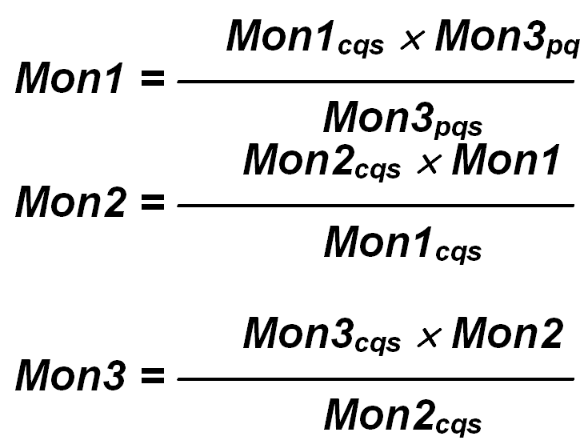10 worksite employment estimates
Worksite Employment Estimates
The estimation of worksite employment is much simpler and more straightforward than that exhibited in the single account processing just described. The only real determinations needed are whether the worksites are eligible to receive estimates from the master account and whether the master contains adequate information for preparing the prorated estimate.
Warning: One of the most common estimation problems occurs when worksite prorations fail to materialize. It may seem that all of the worksites are non-reported, but no estimations are made, or perhaps the wages are estimated, while the employment is left unprocessed. But when only one worksite shows a space, an “R”, or an “H” in any of the three months of employment, it locks out the rest of the worksite family from employment proration. Currently, the only way to track down the source of the problem is to peruse the family’s worksites with ES2C and find one without an “M” in an employment field. Partial family prorations may one day be required of the system. In the meantime, the ES2H proration feature may be more useful for these families.
The worksite summary information, contained in the file written by the ES2UT01 program, is checked for employment reporting consistency. If some (but not all) of the worksites that comprise the family have reported employment data, the remaining worksites (with missing data) are ineligible for proration, since the family is deemed to be already reported. Worksites showing missing data are regarded as though they were zero reporters. They receive an estimation code of EMP8, which means the listed zeroes are “accepted” as though they were reported. Since worksite prorations are not forwarded to the estimation report, these codes will not be seen, except for the final tallies on the control totals pages.
For the worksites that are not part of a partially-reported family, there are two more hurdles to clear. If the master account experienced an estimation failure in regard to the employment fields, the worksite proration automatically fails as well. This is given an estimation failure code of EMPE, indicating the chain reaction effect of employment estimation failures from the master through the worksites.
The other potential failure occurs in checking the master account’s prior quarter employment data. If the third month employment within the prior quarter has a zero value for the master account (and thus the prior quarter worksite summed employment is assumed to be zero as well), the prior quarter worksite-to-master employment ratio is undefined. This causes the worksite employment distribution to fail with a code of EMPG (“inestimable employment due to absence of prior quarter data”). Each of the three codes just described (EMP8, EMPE, and EMPG) results in the completion of estimation processing.
The successful worksite employment distribution occurs if none of the preceding conditions has been encountered. This is the fully-delinquent family of worksites experiencing a bona fide employment proration. This is represented by the EMP7 estimation code, and is coded with the equations shown below:
The equations use cqs to identify master account data (diminished by applied worksite estimates), pqs to signify the prior quarter’s summed worksite data (decreased by processed worksite values), and pq for worksite’s prior quarter employment value. This estimation technique also checks the liability and termination month counts (described in the Preliminary Notes sub-section) to determine partial-quarter activity as a proration factor, but will use an “E” or “P” indicator application to each of the individual monthly employment indicator flags. The reason for the universal indicator setting is that the presence or absence of reported employment data for a family of worksites is defined as an all-or-none situation. Either all three months can be estimated for the worksites, or no employment can be estimated at all.
As estimates are applied, the cqs and pqs subscripted fields are adjusted, according to the following equations:
In the equations, pq-subscripted Mon3 is the worksite’s prior quarter third month employment, and the Mon1, Mon2, and Mon3 values (subtracted from each of the pqs-subscripted fields) are the worksite’s just-estimated monthly employment values for the current quarter. The remaining employment values provide a new month-to-month ratio for the next worksite employment estimates that can vary to a minute degree from the original ratio. To assist in showing how this process works, a sample family’s employment distribution processing is shown in the next sub-section.
Note: The summed third month’s employment value excludes all worksites that were inactivated during the previous quarter. Thus, when an inactivated worksite comes up, the above adjustment formulae are bypassed so as to keep the monthly ratios in line. If these inactivated worksites were left in the process, the current quarter estimates would be low by the final employment in the terminated worksites, giving a difficult out-of-balance situation to contend with.
This technique is the last in the micro estimation process. The appropriate estimation codes and flags are placed both in the specific Micro record and in the Micro Estimation Report Data File, which is used to transfer these data to the estimation report, printed in the ES2UT02 program. For specific information about the report output formats, flag usage, etc., refer to Appendix I (Program Descriptions) for the ES2MI02 and ES2UT02 programs.
Related Links

